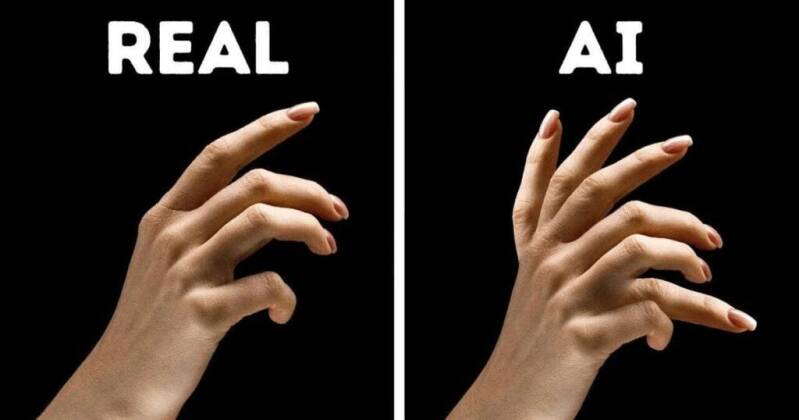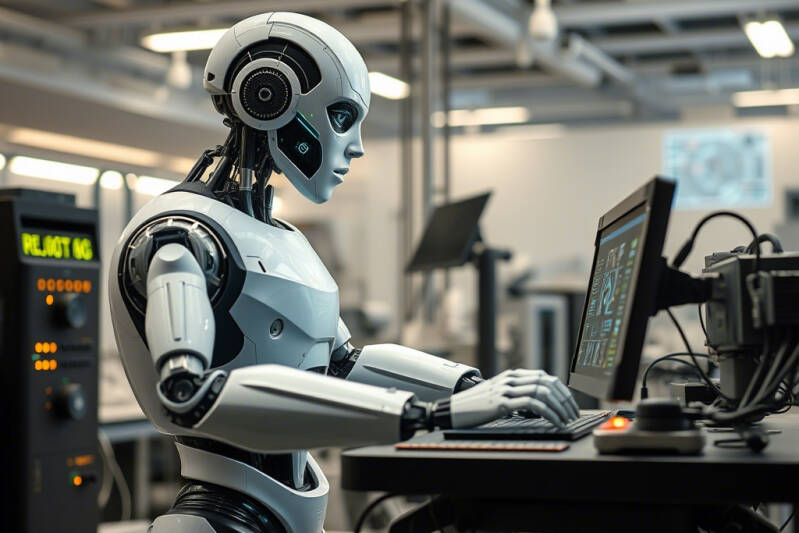AI offers opportunities to create the impossible (which I myself find fascinating), but it also offers opportunities to deceive people, to present false truths and, in the worst case, to even profit from them. We will see more and more of this in the coming years, without people being prepared for it.
While in India, Pakistan, and many other countries, spammers still try to get hold of your credit card details with fake emails and alleged viruses, in the future this will be done with AI-generated videos, images, texts, or other fake media.This makes me increasingly thoughtful and is one of the reasons why I am trying to engage with the topic more and more. I am certain that sooner or later we will all have to deal with this issue, whether we want to or not; it will catch up with us all at some point.
Now the big question: how can I detect AI-generated content?

e.g."SynthID" adds a fingerprint to every image from Google Gemini.
The answer is unfortunately not that simple. Even if I present you with examples and tools below that currently work (September 2025), you must bear in mind that AI is currently developing so rapidly that it is almost a full-time job to keep up with the topic.
It's no secret that AI creates watermarks in its content. And by that I don't mean the Google Gemini or Adobe Firefly logo in the bottom corner, but rather, for example, a visible code in a text generated by Chat GPT, or a color change in, for example, the contrast in the form of a pattern in an image that is not recognizable to the human eye.
Unfortunately, however, recognition tools are currently necessary to read these fingerprints from the images, which are not publicly accessible.
But I have found a few tools that promise to help detect AI-generated content. I also immediately did a test with a business plan created by Chat GPT and an image generated by Google Gemini 2.5. (If you know of any other tools that we can test for you, please contact us)
The following tools promise to help detect AI-generated text:
- Justdone.com
It recognizes the writing style of AI and detects the inhumanity in the text. It worked perfectly in my example and identified my text as AI-generated. - try.undetectable.ai
Unfortunately, it failed my test. It rated my business plan from Chat GPT as 99% human. - quillbot.com
Much of my Chat GPT business plan has been analyzed as AI. (approx. 50%)
The following tools promise to help detect AI-generated images:
- Metadata2go
Displays the metadata of an image - exifdata.com
Displays the metadata of an image. No download necessary. Only a direct link is required. - Sightengine.com
Analyzes the image independently. (img upload) Correctly recognized all of my real and fake images. This included video game screenshots.
In the field of images and graphics, I have repeatedly read that metadata should be synchronized. Apparently, an AI-generated image should contain the technical name of the AI in the metadata under Software (or similar) or other missing details.
In my personal opinion, however, this is nonsense, as there are many older images on the internet that do not contain any such data. This is perhaps to keep the original photographer or creator of the graphic anonymous.
In my opinion, it seems much more sensible to look for anomalies in the graphic.
Here are a few pointers to help you detect it visually:
- Crippled hands/fingers, or too few fingers on one hand
My favorite example... I could puke from all the broken hands that exist) This is the best example that applies most.
AI uses data from the internet to create images, but as we all know, the internet is full of vacation photos, pornography, and random selfies of influencers making strange gestures. This confuses the AI and prevents it from depicting correct details such as hands. Literally, too much information.

- Strange eyes (not rude pupils) or squinting (strabismus) No, it doesn't have to be a stroke, it could just be AI.
The pupils and irises of the eyes are not natural in shape and appear damaged. Squinting is also possible. - Depth of field that is too beautiful to be true
- Other anomalies (deviations from normal)
There are millions of cat photos on the internet, and every cat in the photo has a tail that is different from the other cats. This can confuse the AI, which then quickly generates another tail on the image or an incorrect paw.
- Text not legible.
No, this is not Thai, it is simply an attempt by AI to write text, even though the AI program used cannot write.
Please note that there are AI models that can write. It is also possible to turn a real image into a false truth, for example with a video.
Can you see why this well-known picture of Trump below is an AI fake? The answer is below the picture.
Solution: Pay attention to the hands and the text on the shirt and the text on the hat.
- Wrong shadow
- Background that makes no sense.
For example, a photo of a person in focus. In the background, you see houses without doors or cars without wheels, road signs that make no sense, or furniture in an office that makes no sense.
A completely normal, realistic office? - NO! answer again below the picture
Answer: Pay attention to the legs of the office chairs, their casters, and armrests. They don't make sense. The lighting on the wall and its shadows are also alarming signs. The panels on the ceiling and the ceiling lamps are also very unrealistic. The table and the stand on which it stands, as well as the wooden floor, are not correct.
In the past, the lack of images depicting historical events and bygone eras posed a significant problem. Often, people had to rely on written records, oral accounts, or rare hand-drawn illustrations to gain an adequate picture of the past. These gaps frequently led to incomplete or even false perceptions.
Today, this problem has fundamentally changed and been reversed: we live in an era of visual overload. A seemingly endless amount of images are constantly being produced, shared, and distributed. This has already been exacerbated by the widespread use of smartphones, social media, and easily accessible image editing programs. But with the advent of AI, this phenomenon is now taking on even more excessive proportions.


I sincerely hope that I have been able to help you distinguish between real and fake images.
Take care! - Sam






